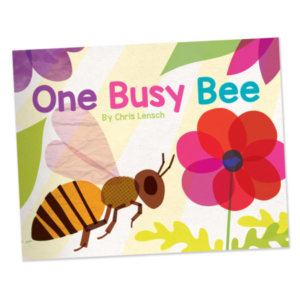Learning to Count
In one of my preschool classes last year, a young girl ran up to me with eyes wide open and announced excitedly that she could count to 11! “What an accomplishment!” I said, then invited her to show me her skill. She stood up even taller and beamed, “1-2-3-6-7-8-11.” Some would say her counting didn’t quite measure up. But even though she had not quite mastered all of the numbers, she had beautifully demonstrated an awareness that numbers are sequenced and have order. She also had learned important math vocabulary. Her joyful approach also communicated her excitement to learn math. Learning is a process. Each step in the process is valuable and worth celebrating.
How can we challenge and help children
move through the steps
of learning to count?
Children learn through play and repetition. Reading books that incorporate math skills, such as counting books, invite children to safely apply emerging knowledge. Need some more ideas on how to use counting books in fun and active ways? Check out these five techniques:
One book, 5 Ways to Read:
The number of books you have matters less than how many ways you read it. The benefit of a book extends beyond simply reading it from cover to cover. Invite children to be active participants with counting books through these 5 creative book reading techniques:
1. Palm Writing:
Invite your child to trace a number in the book with his finger. Trace that number in his palm then tap the same amount of fingers. He may want to try writing the number in your palm too!
2. Act It Out:
Look for counting books that have descriptive verbs that children can mimic. For example: 2 blinking eyes (Children blink their eyes 2 times), 3 flowers swaying in the breeze (Children sway side-to-side 3 times).
3. Bookmark the Number:
Invite children to hold a stack of numbered bookmarks. Encourage the child to look for the number on the page then slide the matching bookmark between the pages. Read it again and try hunting for punctuation or letters instead of numbers. Download your own set of free concept hunt bookmarks.
4. Seek and Find:
Identify the featured number for the page then look for the matching quantity of items. Expand this to include looking for a specific letter on the page or even a shape. Can you find 3 letter M’s? Can you find 3 circles?
5. Block Tower Reading:
Invite the child to sit next to a pile of blocks while you read the story aloud. The child hears a number and makes a stack of blocks with the same amount. Turn the page, repeat and build a new tower. Compare all of the towers at the end of the story.
Counting books are important for young children because they introduce the language associated with numbers. They also help preschoolers begin to understand that numbers are symbols for counting, just as letters are symbols for sounds and words.
Busy Bee Counting Book, by Chris Lensch, is written to easily apply all 5 techniques. It is the featured book in the Experience Preschool Bees and Butterflies Preschool Curriculum kit.
What is Inspired Learning? Inspired Learning is the blog written by the Experience Early Learning Co. – publishers of the Experience Curriculum preschool curriculum – to support all early childhood educators. In addition to preschool curriculum, the Experience Early Learning Co. publishes * children’s books * preschool music & dance and * authentic assessment tools. These materials have been serving child care directors, family childcare providers, preschool teachers, homeschoolers and parents of young children since 1984. All materials are crafted to inspire both the educators and the children to experience learning through creative expression, play and open-ended discovery. Experience Curriculum preschool curriculum supports a child’s social-emotional, physical and cognitive development.
